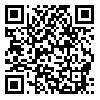BibTeX | RIS | EndNote | Medlars | ProCite | Reference Manager | RefWorks
Send citation to:
URL: http://irj.uswr.ac.ir/article-1-422-en.html
Objectives: Nowadays, Snap-fits are used in the automotive industry as a proper alternative for mechanical joints, cabling joints, and car interior lining joints. Due to the special form of these joints, which are assembled manually, the contact area between Snap-fits and the worker’s fingertips can be too small. This can cause skin pain on the worker’s fingertips. Therefore, an ergonomic study of these assembly operations can be useful for the automotive industries. This study was thus undertaken to investigate the severity of mechanical stress on fingertips.
Methods: In the first stage, the FEM-Method is used to analyse the influence of some effective factors including gender, age, the thickness of the epidermis of a skilled worker, wearing gloves, amount of force, force angle, and snap-fit material parameters during snap-fit assembly. For this purpose, four thumb models, 50% male and 50% female from 20-29 and from 50-59 years old, are used.
Results: The mechanical stress is directly associated with gender, age, thickness of epidermis, and the amount of force, and inversely associated with wearing gloves, and force angle.
Discussion: The maximum compressive stress and the greater deformation of skin in the male group as compared to the female group is due to the smaller size of women’s thumbs and a less thick outer layer of women’s skin. Moreover, for old people, a higher elastic modulus leads to a greater stiffness of their skin. Finally, the young people’s modulus does not have a significant effect on the maximum compressive stress and total deformation of the skin.
Received: 2015/06/4 | Accepted: 2015/08/18 | Published: 2015/09/1





